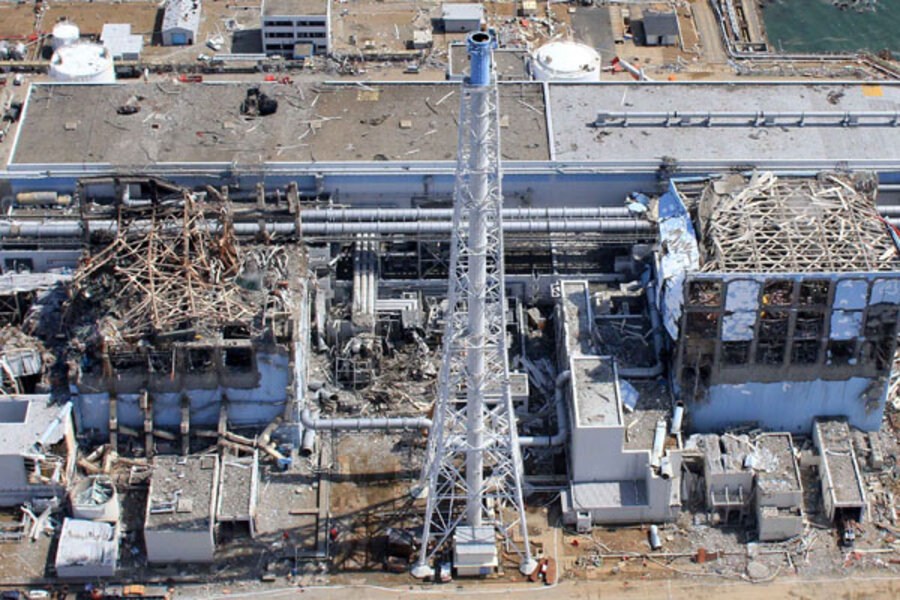Tepco's handling of Japan's nuclear crisis under severe scrutiny
Loading...
| Ichinoseki, Japan
Japan’s handling of its nuclear crisis will come under unprecedented scrutiny as the arrival this week of a team of inspectors from the International Atomic Energy Agency [IAEA] begins an investigation into Japan's biggest nuclear accident.
The IAEA’s 10-day visit, which began on Monday, coincides with mounting criticism of the operator of the Fukushima Daiichi plant, as it becomes clear that the damage caused by the March 11 earthquake and tsunami was far worse than initially thought. Its findings could have a significant impact on public attitudes toward both the plant's operator and the Japanese government, and are certain to attract the interest of other countries with nuclear power plants.
The team, led by Michael Weightman, Britain’s chief nuclear safety inspector, expects to find answers to what one Japanese official described as a “long list of questions.”
But the aim of the visit was not to apportion blame, stressed Mr. Weightman: “We will come to our best judgment without fear or favour from anybody,” he said, adding that the purpose of the visit was to “seek information to see how the world can learn lessons from the unfortunate events here.”
He added: “We have full cooperation and access to information. Whatever questions we ask, there are answers. We will come to our own views on information we seek. We seek to learn lessons on behalf of the world.”
Japan’s top government spokesman, Yukio Edano said: ''The IAEA team's visit to investigate the accident is important from the standpoint of ensuring transparency to get to the bottom of this accident.”
The operator, Tokyo Electric Power [Tepco], did little to further its faltering reputation on Thursday, when it altered its account of its initial response to the nuclear accident.
The firm said it had continued to inject seawater into one of the damaged reactors soon after the March 11 tsunami, reversing an earlier statement in which it said it had suspended the risky measure amid pressure from the prime minister’s office.
That volte face comes days after it conceded that fuel rods in three reactors had melted within days of the disaster, a scenario that some scientists had predicted weeks ago. Tepco claimed, however, that it had been unable to confirm the fuel’s condition until it had analyzed all of the data.
"We have to take seriously the criticism that we haven't done enough to provide and circulate information," Mr. Edano told reporters at a news conference. "But we have never covered up information we had."
Quake may have damaged plant
Questions have also been raised about Tepco’s original explanation for the damage inflicted on the plant. For weeks, it claimed that power to vital cooling systems inside the reactors was knocked out by the tsunami that followed the earthquake.
But data from the plant indicated that the earthquake had been more powerful than three of the six reactors were built to withstand, raising the possibility that at least one of the reactors was disabled before the tsunami arrived.
Deadline for cold shutdown, new leak
Tepco has vowed to bring radiation levels under control and achieve "cold shutdown" in four stricken nuclear reactors between October and January next year, a deadline some experts have dismissed as unrealistic.
Work to cool the reactors had been hampered by dangerously high radiation levels at the site; the biggest challenge now facing workers is how to store tens of thousands of tons of contaminated water that has gathered in reactor buildings, turbines, and trenches.
Makeshift containers that are being used to store the water are almost full, and work has yet to be completed on a system to reprocess the liquid so that it can be reused to cool the reactors. On Thursday, Tepco said one water storage facility appeared to have sprung a leak.
What will this cost Tepco?
The firm also faces a compensation bill running into trillions of yen that will hit profits for years to come. Its stock has fallen more than 80 percent since the day before the tsunami, and earlier this month it recorded the biggest annual loss ever by a Japanese company outside the financial sector.
The government agreed to set up a special fund using taxpayers' money from which Tepco can draw cash – which it will then have to pay back – to cover damages claims that some analysts say could reach $130 billion.
Tepco’s future looks increasingly bleak, says Jun Okumura, a senior analyst at the Eurasia Group.
“Tepco is the loser in all of this,” he told the Monitor. “It has to pay damages, write down four [irreparably damaged] reactors, as well as pay about 1 trillion yen for extra fuel. That’s a lot of money.
“We still don’t know how much the damages bill will be. If the amount is so huge and the banks refuse to cooperate, the government will be forced to step in with more cash.”
While Tepco says it has no immediate plans to pass on extra costs to customers, Mr. Okumura believes consumers will inevitably pay the bill for extra fuel. “Unless the government is going to foot the bill, that money will have to come out of utility rates,” he says.
The 18-member IAEA team, which includes experts from the US, China, France, and India, will visit the Fukushima Daiichi plant on Friday and is expected to present its findings at an IAEA ministerial meeting in late June.





